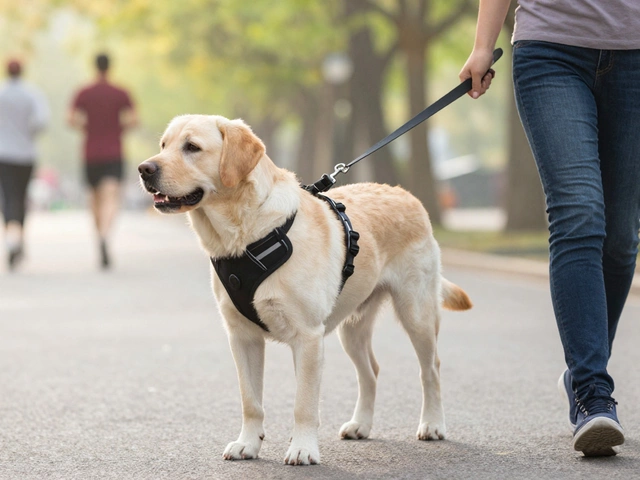Collars for Pulling Dogs: Choose the Right One for Safer Walks
If your dog turns every walk into a tug‑of‑war, you’ve probably tried a few tricks that didn’t stick. The truth is, the right collar can make a huge difference without hurting your pup or breaking your arm. Below you’ll get a quick rundown of the most common anti‑pull collars, how to fit them properly, and what to watch out for so both you and your dog enjoy the stroll.
Common Types of Anti‑Pull Collars
Front‑clip harness – The leash attaches on the chest, which directs the dog’s motion back toward you when they pull. Most owners love it because it feels gentle and it reduces choking. Look for padded straps and a snug but not tight fit.
Head‑halters – Think of a horse’s halter for a dog. The leash pulls on the nose, steering the head and, in turn, the body. They work fast, but some dogs need a bit of time to get used to the pressure on their snout.
Martingale (limited‑slip) collar – This is a semi‑tight collar that tightens just enough to stop a slip‑away but never becomes a choke collar. It’s great for breeds with narrow heads (like Greyhounds) and for dogs that pull because they can’t get enough control.
Sturdy buckle collar with a gentle‑pull leash – A basic flat collar combined with a leash that has a built‑in shock absorber can curb sudden yanks. It’s not as effective as a front‑clip harness, but it’s a low‑cost entry point if you’re not ready to buy a full harness.
Electronic e‑collar – These deliver a mild vibration or beep when the dog pulls. They’re controversial, and many trainers advise using them only under professional guidance. If you’re uncomfortable with any level of stimulation, stick with the non‑electronic options above.
How to Fit and Use a Pull‑Control Collar
First, measure your dog’s neck or chest (depending on the collar type) and add a finger’s width for comfort. A collar that’s too tight can cause breathing issues; too loose, and your dog will slip out. When you put a front‑clip harness on, check that you can slide two fingers beneath the straps on the chest and waist.
Second, start slow. Walk on a short leash in a quiet area and give your dog a few cue words like “easy” or “walk.” If they pull, the front‑clip will turn them toward you, and you can give a calm “yes” when they follow. Consistency is key – the dog learns that pulling doesn’t get them where they want to go.
Third, combine the collar with basic training. Teach a “heel” or “sidewalk” cue using treats or a clicker. The collar just helps reinforce the behavior; it’s not a magic fix.
Finally, watch for signs of stress. Heavy panting, drooling, or a tight‑looking neck can mean the collar is too harsh. If you notice any of these, loosen the fit or switch to a gentler style.
In short, the best collar for a pulling dog is the one that fits well, feels comfortable, and works with positive training. Start with a front‑clip harness or a well‑fitted martingale, keep training sessions short and fun, and you’ll see fewer tug‑of‑war moments. Your next walk could be relaxed, enjoyable, and—most importantly—safe for both of you.

Top Collars for Dogs That Pull: Expert Recommendations
Choosing the right collar for a dog that pulls can significantly improve walks and strengthen your bond with your canine friend. This article explores various types of collars suited for dogs that tend to pull, including harnesses, head collars, and various training collars. We delve into the advantages and drawbacks of each collar type, offering practical advice along with product recommendations. Whether you're looking to curb pulling behavior or simply want a new collar for daily walks, the right choice can make all the difference.
read more



